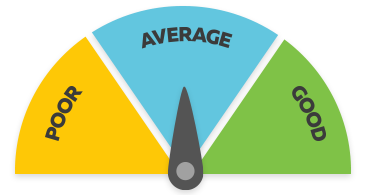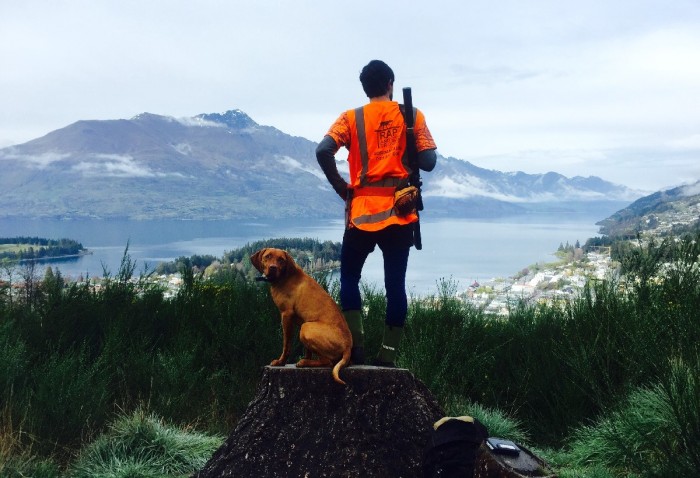Hunter/Trapper
Kaikimi/Kaihopu Kararehe
Alternative titles for this job
Hunters and trappers shoot or trap animals to remove pests and control disease, and for food, fur, or research.
Pay
Pay for hunters and trappers depends on the type of work they do and their experience.
Job opportunities
Pay
Pay for hunters and trappers varies depending on skills, experience and the type of work they do.
Hunters and trappers may be paid:
- an hourly rate
- by the number of pelts or the amount of fur they produce
- by the number of traps they lay
- by the land area they cover (usually payment is per hectare).
Many hunters and trappers are self-employed.
(This information is a guide only. Find out more about the sources of our pay information)
What you will do
Hunters and trappers may do some or all of the following:
- decide where to hunt or trap animals
- get approval from authorities before hunting and trapping
- map the location for traps or hunts using technology such as navigation software
- notify people in the area where traps and poison are set
- keep a record of the work done – for example, the number of animals killed
- track animals by checking the area for signs such as droppings or damage to vegetation
- mix bait, set traps, or lay poison
- inspect traps and bait stations and remove or dispose of animals
- shoot animals (sometimes at night, which is known as spotlighting)
- cut tracks for better access to traps and bait stations
- skin animals, and cut up carcasses.
Skills and knowledge
Depending on the animal they are hunting, the method they are using, and the reason for their hunting, hunters and trappers need to have:
- knowledge of different types of traps and poisons
- good animal-tracking skills
- knowledge of animal behaviour and likely feeding places
- good shooting skills, and knowledge of firearm care, safety and laws
- animal-skinning skills
- knowledge of the outdoors, including bush and mountain environments
- driving skills – for example, ability to drive a four-wheel drive or a light utility vehicle such as a quad bike
- awareness of environmental issues, ecology and safety rules.
Working conditions
Hunters and trappers:
- may work long and irregular hours, and may do some shooting at night
- work in all weather conditions in the country, in the bush, on hills, and on farms and reserves
- may have to travel by foot, car, motorbike or helicopter to get to rural or remote locations.
What's the job really like?
Dave Hunter
Hunter/Trapper
Helping to protect the environment
For Dave Hunter, reducing pest numbers to help protect the environment is an important part of his job as a hunter/trapper. "I am very much an environmentalist, and I go to great pains to make sure everything we do to control pests is done as best it can be."
The nature of hunting and trapping has evolved, with more legislation governing pest control, and in Dave's senior role he is now required to do more paperwork. "It's a huge job. We need resource consents, permission from the medical officer of health and the Department of Conservation."
Getting out and about keeps the job interesting
Despite the paperwork, Dave enjoys the job and is never shut in the office for too long. "I enjoy night shooting and I still get out baiting and carry out rabbit control. The job is very satisfying, like when you cure a pest problem for a grape grower or orchard owner and go back there a few years later and can still see the results of your work."
Entry requirements
There are no specific requirements to become a hunter or trapper. However, a New Zealand Certificate in Pest Operations (Level 3) may be useful.
You need a minimum of a First Aid Certificate to be employed by the Department of Conservation's culling programme or TBfree New Zealand.
If you are hunting with a rifle, you need a firearms licence and a hunting permit.
Hunters and trappers intending to use poison to kill animals need to have a Certified Handler Compliance Certificate and a controlled substance licence.
- NZQA website - information on the New Zealand Certificate in Pest Operations (Level 3)
- NZ Police website - information about firearms licensing
- Department of Conservation website - information about hunting permits and licences
- WorkSafe website - controlled substance licence information
- WorkSafe website - information about becoming a certified handler
Secondary education
No specific secondary education is required for this job, but maths and English to at least NCEA Level 2 are useful.
Personal requirements
Hunters and trappers need to be comfortable working outdoors and on their own, as they may spend long periods alone in the bush.
Useful experience
Useful experience for hunters and trappers includes:
- work in the bush
- any work involving livestock or farming
- servicing machinery
- driving on farmland or in the bush
- tramping and recreational hunting experience.
Physical requirements
Hunters and trappers need to have a good level of fitness and stamina because the job can involve long hours and a lot of walking over rough terrain. They also need good eyesight (with or without corrective lenses).
Find out more about training
- Primary ITO
- (04) 801 9616 - info@primaryito.ac.nz - www.primaryito.ac.nz/
What are the chances of getting a job?
Good demand for hunters and trappers
While hunting and trapping is a relatively small occupation, vacancies arise regularly because:
- the workforce is ageing – many hunters and trappers are leaving the job due to the work becoming too physically demanding for them
- few people are choosing to train as hunters and trappers
- organisations, such as TBfree New Zealand and the Department of Conservation, run large-scale pest control programmes.
According to the Census, 129 hunter/trappers worked in New Zealand in 2018.
Most opportunities for hunters/trappers are in the TBfree programme
Demand is particularly high for possum and ferret trappers because much of the tuberculosis (TB) in New Zealand cattle, deer and wildlife is due to disease-carrying wild animals like possums.
The TBfree programme aims to eradicate these species to protect New Zealand's high-value meat industry. It provides up to 80% of jobs in possum control.
Getting your foot in the door
If you want to start out as a hunter or trapper, you need to be prepared to:
- get work in the bush alongside an experienced hunter/trapper
- find a contractor to work for by contacting councils, the Department of Conservation, or TBfree
- learn the basics, such as cutting tracks, trapping and monitoring, before getting involved in hunting and shooting
- work towards a pest control qualification, and any other certificates, licences or permits required for the job.
Many hunters and trappers run their own businesses
Most hunters and trappers are self-employed. They may work for organisations such as:
- government agencies, including TBfree and the Department of Conservation
- local authorities such as regional councils
- private landowners such as forestry companies and farmers
- private pest control companies.
Sources
- Ingram, T, primary sector services manager (pest control), Primary ITO, Careers Directorate – Tertiary Education Commission interview, April 2018.
- Munn, J, director, Trap and Trigger, Careers Directorate – Tertiary Education Commission interview, April 2018.
- Stats NZ, '2018 Census Data', 2019.
- TBfree website, accessed April 2018, (www.tbfree.org.nz).
(This information is a guide only. Find out more about the sources of our job opportunities information)
Progression and specialisations
Hunters and trappers may progress to managerial or supervisory roles, or start their own businesses.
They may also move into other roles, such as biosecurity officer or pest controller.
Hunters and trappers may also specialise in work, such as fur hunting, which involves trapping or killing animals for their fur to sell.
Last updated 28 March 2025

